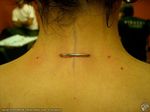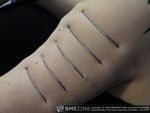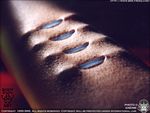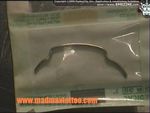Pocketing
Pocketing is often described as an "anti-piercing." In piercing, the middle of the jewelry is under the skin and the ends are exposed. In pocketing, the ends of the jewelry are under the skin, and middle is exposed. Small "pockets" hold the jewelry in place.
The jewelry is, generally, just a custom curved bar with rounded ends (no beads, just a smooth end). It is extremely important that the jewelry be perfectly fitted to the skin. Other people have suggested that inverse surface bars may be more appropriate, but the basic model is the same.
Almost all pocket piercings reject and have a similar rejection rate to traditional surface piercings. Placement is extremely important. Depending on the way the skin moves, the pocketed jewelry could actually fall out or stretch incorrectly.



